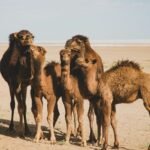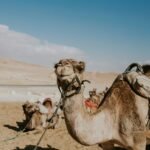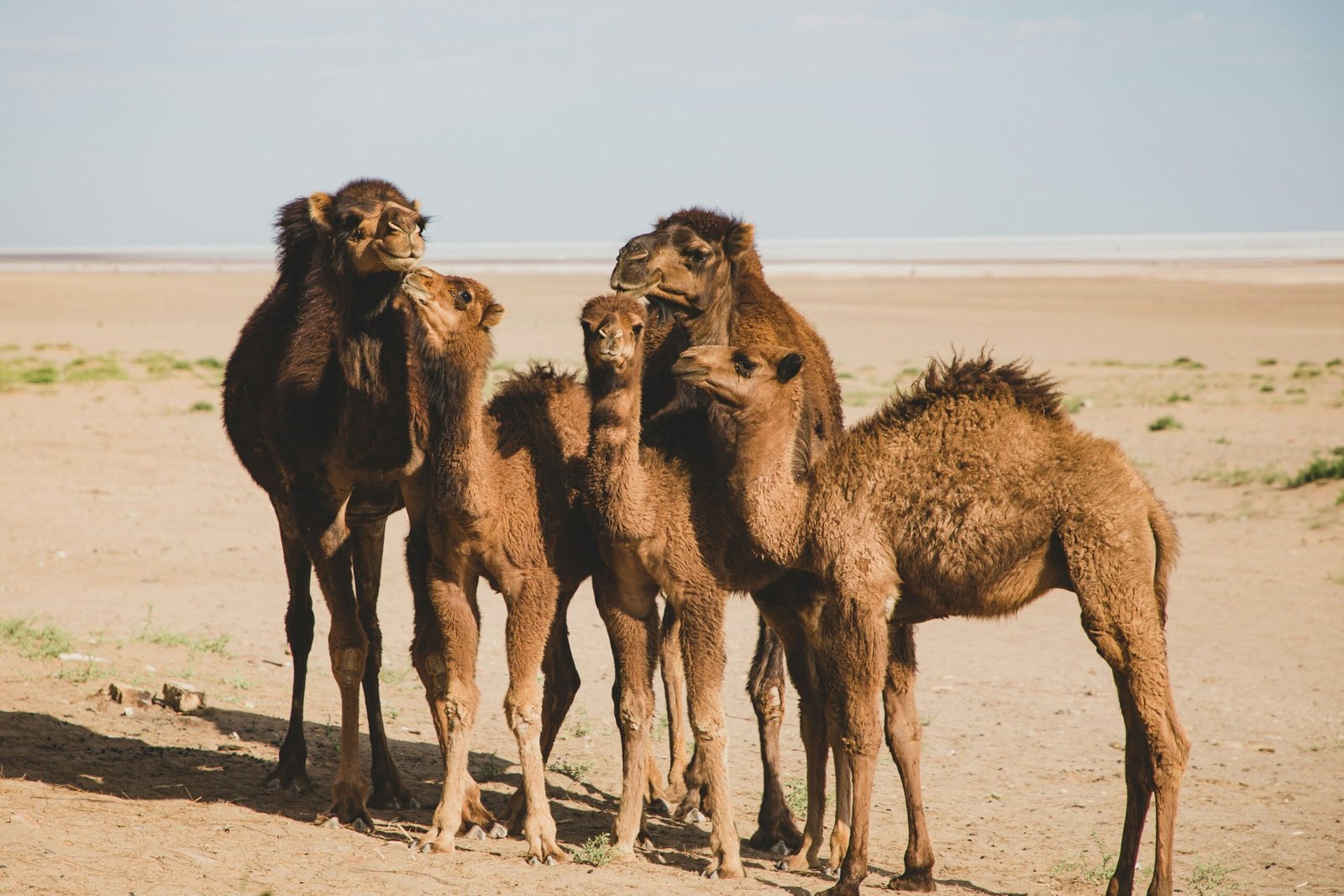Camels are magnificent creatures that have adapted exceptionally well to survive in harsh desert environments. Their ability to run effortlessly in such extreme conditions is a testament to their unique physiological and behavioral adaptations. In this article, we will explore the various reasons why camels are perfectly suited for running in the desert.
1. Unique Anatomy and Physical Adaptations
Humped Backs for Energy Storage
One of the most distinctive features of camels is their humped back. Contrary to popular belief, the hump is not filled with water but rather stores fat. This fat serves as a crucial source of energy for the camel during long journeys without access to food. The hump can provide nourishment for several weeks, allowing the camel to maintain its energy levels and continue running effortlessly in the desert.
Additionally, the hump plays a role in thermoregulation. The fat in the hump acts as insulation, preventing excess heat from reaching the camel’s body. This helps the camel stay cool in the scorching desert heat, reducing the risk of overheating and dehydration.
Long Legs for Efficient Movement
Camels possess long, powerful legs that are perfectly adapted for traversing the sandy desert terrain. These legs help distribute the camel’s weight evenly, preventing it from sinking deep into the sand. The length of their legs also allows for a longer stride, enabling them to cover more ground with each step.
Furthermore, the structure of their legs provides stability and balance. The joints and ligaments in their legs are highly flexible, allowing them to adjust to uneven surfaces and absorb shocks while running. This adaptability helps them maintain their momentum and avoid injuries while navigating the challenging desert landscape.
Wide, Padded Feet for Stability
The feet of a camel are specially designed to provide stability and prevent sinking in loose sand. Their large, flat footpads spread the weight more evenly, reducing the pressure exerted on the sand. This adaptation minimizes the risk of getting stuck in the desert dunes and allows for efficient movement.
Moreover, their tough, leathery soles help them grip the ground, ensuring stability while running in the desert. The combination of wide, padded feet and sturdy soles enables camels to maintain their balance and avoid sinking, even on the softest sand. This adaptation is crucial for their ability to run effortlessly across the sandy dunes.
2. Water Conservation and Hydration Strategies
Efficient Utilization of Water
Camels have evolved remarkable mechanisms to conserve water, making them well-suited for desert environments where water is scarce. Unlike other animals, camels have the ability to go without water for extended periods. They can survive for weeks or even months by relying on the water stored in their bodies.
The camel’s body is highly efficient at extracting moisture from the food they consume. When they eat, the water in their food is utilized and absorbed in their digestive system, allowing them to extract the maximum amount of hydration. Additionally, they have the ability to reabsorb water from their urine, minimizing water loss.
Unique Red Blood Cells
Camels possess unique red blood cells that are oval-shaped instead of the typical circular shape found in most mammals. This structural adaptation enables their blood cells to flow easily even when dehydrated, preventing the cells from clumping together and blocking blood vessels. As a result, camels can withstand significant dehydration without compromising their ability to run or function effectively.
Furthermore, the unique shape of their red blood cells allows for greater oxygen-carrying capacity. This adaptation enables them to deliver oxygen more efficiently to their muscles, enhancing their endurance and overall performance while running in the desert.
Efficient Cooling Mechanisms
To combat the scorching heat of the desert, camels have developed efficient cooling mechanisms. They can regulate their body temperature by allowing their internal temperature to rise during the day and then cool down at night. This adaptation helps them conserve water by reducing the amount lost through sweating.
Camels have a dense network of blood vessels close to the surface of their skin. When they are overheated, these blood vessels dilate, allowing heat to be released through the skin’s surface. Additionally, they have the ability to reduce perspiration by adjusting their metabolic rate, minimizing water loss through sweating. These cooling mechanisms enable camels to maintain a stable body temperature and conserve water while running in the desert heat.
3. Behavioral Adaptations
Group Dynamics
Camels are social animals that often travel in groups called caravans. This group behavior serves multiple purposes, including enhancing their ability to run in the desert. By traveling together, camels can share the workload, taking turns leading the group and benefiting from the windbreak created by those ahead. This cooperative behavior minimizes individual effort and enables camels to conserve energy while running.
In addition to sharing the workload, traveling in groups provides camels with a sense of security. The desert can be a dangerous place with various predators and harsh conditions. By staying together, camels can better protect themselves from potential threats, ensuring the safety of the entire group.
Endurance and Pace
Camels are known for their exceptional endurance, which allows them to run for long distances without getting exhausted. They have the ability to maintain a steady pace for extended periods, conserving energy and ensuring efficient locomotion. This endurance, combined with their remarkable adaptations, allows camels to cover vast distances in the desert without undue strain.
Camels have a unique metabolism that allows them to store and utilize energy efficiently. They can convert fat reserves into energy, providing a sustainable fuel source for their long-distance running. Additionally, their ability to conserve water plays a crucial role in maintaining their endurance. By minimizing water loss, camels can sustain their hydration levels and continue running for prolonged periods without the need for frequent water sources.
Conclusion
The ability of camels to run easily in the desert can be attributed to their unique anatomical, physiological, and behavioral adaptations. From their humped backs and long legs to their efficient water conservation strategies and group dynamics, camels have evolved to thrive in the extreme conditions of the desert. With their exceptional endurance and ability to traverse vast distances without exhaustion, camels truly are the masters of desert running.










